Anthurium bullatus, bullatum, or pandurilaminum? Is it the same plant or three different ones?
This blog will attempt to help clear up your confusion when searching for this gorgeous aroid online. We’ll cover the basics, care tips, and some interesting hybrids you might also want to grow after Anthurium bullatus.
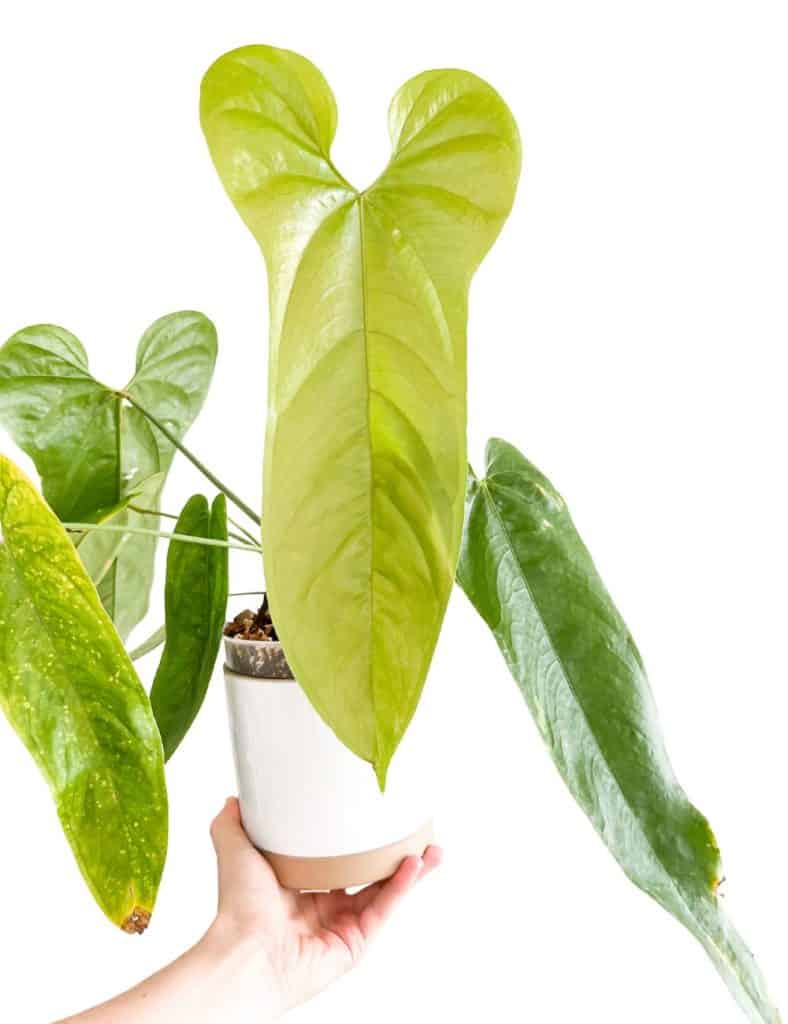
THE BASICS
Anthurium bullatus is a commonly used trade name, not the actual species name. It was an undescribed species for a long time until it was considered to be Anthurium Pandurilaminum.
You might then ask, what is the Anthurium bullatum? Well, the cross between Anthurium subsignatum and Anthurium veitchii is called Anthurium bullatum, a different plant. So there you have it, Anthurium bullatus or pandurilaminum, and bullatum explained!
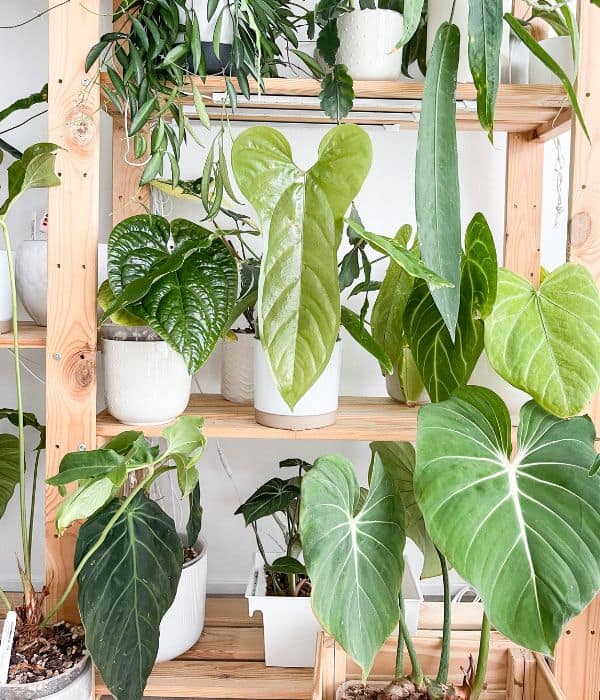
THE ORIGINS
Anthurium bullatus, or as we shall rather call it, Anthurium pandurilaminum, is an Anthurium native to Ecuador. It is a terrestrial aroid only found in the Lita-San Lorenzo Region of Esmeraldas Province, Ecuador. It grows at 150-350m elevation elevations in tropical wet forests and premontane rainforests.
Anthurium pandurilaminum Croat is “characterized by its panduriform blades, widely spaced primary lateral veins, purplish spadix, and long, prominently protruding, whitish stamens. The leaf blades are highly variable in both size and shape.” (Croat, 2019)
Anthurium pandurilaminum (bullatus) belongs to the Polyneurium section.
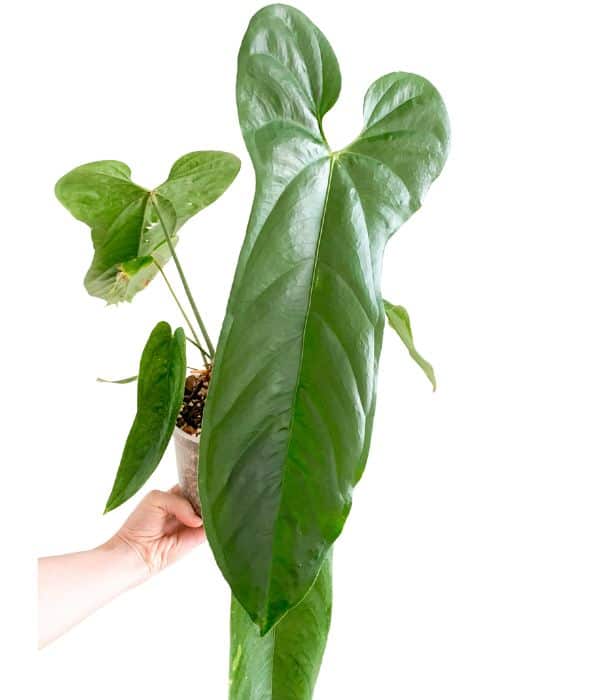
THE LEAVES WITH EARS
Its name comes from the Latin word “pandura” which means pandurate, and “laminum,” which means blade.
Pandurate – having a shape reminiscent of a fiddle; obovate with a pair of sinuous indentations near the base.
The juvenile leaves look nothing like the mature ones. They don’t have the signature hourglass shape and the exaggerated lobes a mature leaf exhibits.
The leaves steal the show. But as they first emerge, they are light green or yellowish and almost translucent. The texture is somewhat leathery and not paper-like of Anthurium lineolatum.
The leaves become semi-glossy once they fully unfurl and harden off. The length of the leaves often surpasses the length of the leaf petiole. They have slight ripples but can’t be compared to Anthurium veitchii or even recavum.
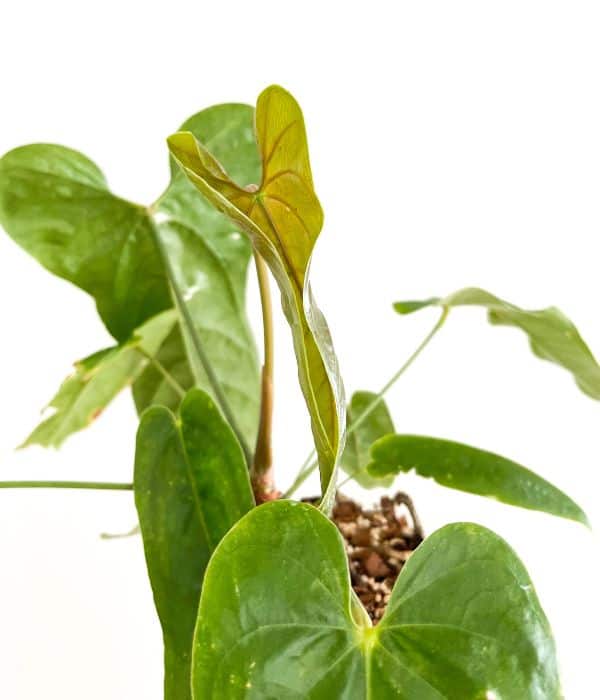
ANTHURIUM BULLATUS CARE
It is one of the easiest anthuriums to grow in my collection. Not as temperamental as Anthurium waroqueanum. I don’t provide it with any special care except more frequent repotting. This anthurium seems to grow roots very quickly. And when given the space to grow, the next leaf upsizes substantially.
LIGHT
It lives under a grow light on my plant shelf along with my other anthuriums. Bright indirect light but not direct sunlight is optimal for this aroid.
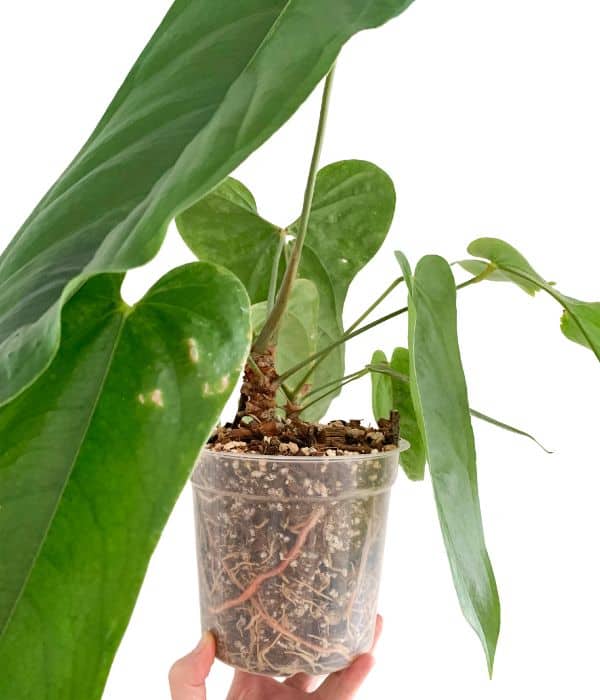
SOIL
I use an aroid mix, a soil-less potting mix that consists of chunky materials such as orchid bark, perlite, coco chips, coco coir, and warm castings for an extra nutrient boost.
WATER
I water my anthurium pandurilaminum regularly when the potting mix looks dry. It is about once a week in my conditions and based on the potting mix I use. But you should check the soil before you water. I suggest using clear pots to see the roots and troubleshoot in time easily.
FERTILIZER
It responds very nicely to regular fertilization by sizing up new leaves substantially. I use a slow-release fertilizer higher in nitrogen and a diluted liquid fertilizer with every watering.
TEMPERATURE & HUMIDITY
As a tropical plant, it requires warm temperatures all year round and above-average humidity if you’re growing it indoors, as I do. Mine lives on a shelf at normal room temperature and thrives. The leaves are super delicate and sometimes tear when expanding. Misting the new leaves help tremendously.
PESTS AND DISEASES
I’ve yet to encounter any pests or diseases with anthurium pandurilaminum. It was growing next to a philodendron gloriosum with spider mites at some point, yet it didn’t catch them. It seems to be a fairly resilient plant. It didn’t also get any fungal diseases that some of my velvet anthuriums, such as Anthurium forgetii, caught.
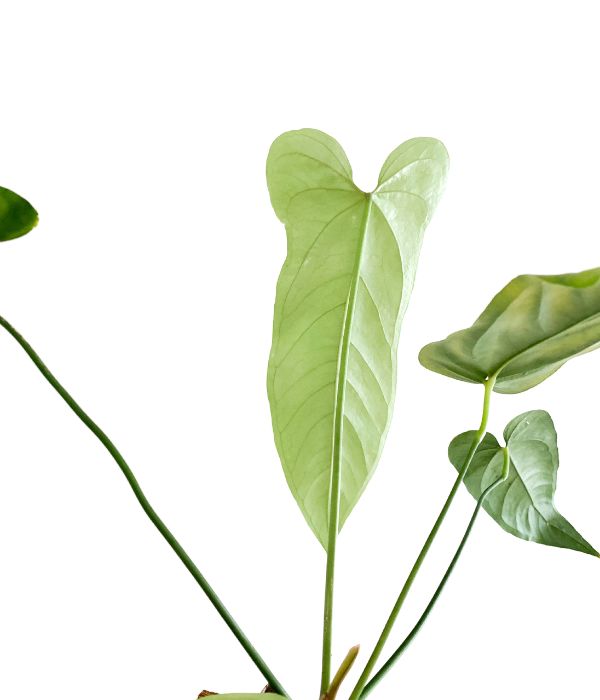
Now let’s look at some interesting Anthurium bullatus or pandurilaminum hybrids. I don’t own these (yet!), but if/when I get them, I’ll upload the photos.
ANTHURIUM BULLATUS X MAGNIFICUM
Anthurium bullatus x magnificum hybrid resembles heart-shaped leaves after magnificum and exaggerated lobes after bullatus. A fascinating hybrid.
Anthurium magnificum belongs to the Cardiolonchium section, where most popular anthuriums come from.
ANTHURIUM BULLATUS X VEITCHII
Anthurium veitchii belongs to the Calomystrium section, so this is the inter-sectional cross.
Unfortunately, this unique-looking hybrid is very difficult to come by.
Source:
CROAT, THOMAS B., et al. “Araceae of the Lita-San Lorenzo Region (Esmeraldas Province, Ecuador) – Part 1: Anthurium sect. Polyneurium.” Annals of the Missouri Botanical Garden, vol. 104, no. 1, 2019. Missouri Botanical Garden Press
If you like unusual anthuriums, check out my other blogs:
Rare Anthurium Species You’ll Want to Grow
A Really Quite Good Guide to Black Anthuriums
The Unrivaled Guide to Anthurium Effusilobum Care
Anthurium Lineolatum: A Stunning Aroid

